Related Research Articles
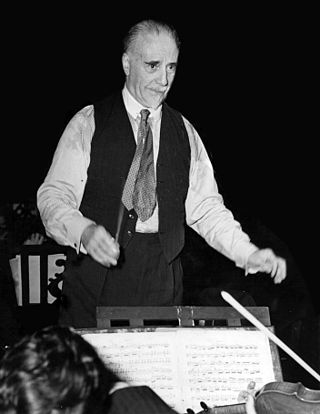
Sir Thomas Beecham, 2nd Baronet, CH was an English conductor and impresario best known for his association with the London Philharmonic and the Royal Philharmonic orchestras. He was also closely associated with the Liverpool Philharmonic and Hallé orchestras. From the early 20th century until his death, Beecham was a major influence on the musical life of Britain and, according to the BBC, was Britain's first international conductor.

Covent Garden is a district in London, on the eastern fringes of the West End, between St Martin's Lane and Drury Lane. It is associated with the former fruit-and-vegetable market in the central square, now a popular shopping and tourist site, and with the Royal Opera House, itself known as "Covent Garden". The district is divided by the main thoroughfare of Long Acre, north of which is given over to independent shops centred on Neal's Yard and Seven Dials, while the south contains the central square with its street performers and most of the historical buildings, theatres and entertainment facilities, including the London Transport Museum and the Theatre Royal, Drury Lane.
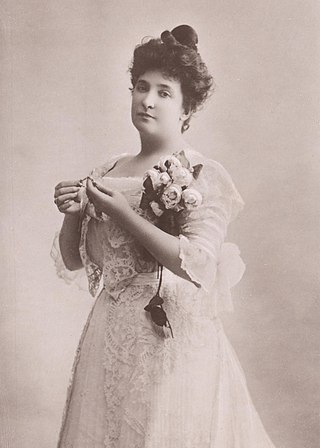
Dame Nellie Melba was an Australian operatic lyric coloratura soprano. She became one of the most famous singers of the late Victorian era and the early 20th century, and was the first Australian to achieve international recognition as a classical musician. She took the pseudonym "Melba" from Melbourne, her home town.

The Royal Opera House (ROH) is a historic opera house and major performing arts venue in Covent Garden, central London. The large building is often referred to as simply Covent Garden, after a previous use of the site. It is the home of The Royal Opera, The Royal Ballet, and the Orchestra of the Royal Opera House. The first theatre on the site, the Theatre Royal (1732), served primarily as a playhouse for the first hundred years of its history. In 1734, the first ballet was presented. A year later, the first season of operas, by George Frideric Handel, began. Many of his operas and oratorios were specifically written for Covent Garden and had their premieres there.
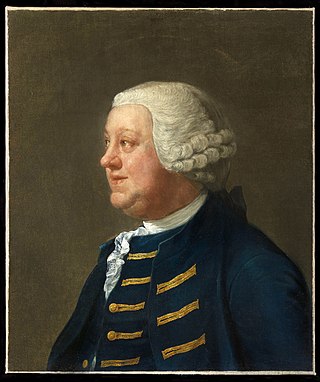
John Rich (1692–1761) was an important director and theatre manager in 18th-century London. He opened The New Theatre at Lincoln's Inn Fields in 1714, which he managed until he built the Theatre Royal, Covent Garden in 1732. He managed Covent Garden until 1761, putting on ever more lavish productions. He popularised pantomime on the English stage and played a dancing and mute Harlequin himself from 1717 to 1760 under the stage name of "Lun." Rich's version of the servant character, Arlecchino, moved away from the poor, dishevelled, loud, and crude character, to a colourfully-dressed, silent Harlequin, performing fanciful tricks, dances and magic. Rich's decision to be a silent character was influenced by his unappealing voice, of which he was well aware, and the British idea of the Harlequin character was heavily inspired by Rich's performances.

His Majesty's Theatre is a West End theatre situated in the Haymarket in the City of Westminster, London. The building, designed by Charles J. Phipps, was constructed in 1897 for the actor-manager Herbert Beerbohm Tree, who established the Royal Academy of Dramatic Art (RADA) at the theatre. In the early decades of the 20th century Tree produced spectacular productions of Shakespeare and other classical works, and the theatre hosted premieres by such playwrights as Bernard Shaw, J. M. Synge and, later, Noël Coward and J. B. Priestley. Since the First World War the wide stage has made the theatre suitable for large-scale musical productions, and His Majesty's has accordingly specialised in hosting musicals. It has been home to record-setting musical theatre runs such as the First World War hit Chu Chin Chow and Andrew Lloyd Webber's The Phantom of the Opera, which has run at His Majesty's since 1986, except during the COVID-19 pandemic theatre closures.

The Royal Opera is a British opera company based in central London, resident at the Royal Opera House in Covent Garden. Along with English National Opera, it is one of the two principal opera companies in London. Founded in 1946 as the Covent Garden Opera Company, the company had that title until 1968. It brought a long annual season and consistent management to a house that had previously hosted short seasons under a series of impresarios. Since its inception, it has shared the Royal Opera House with the dance company now known as The Royal Ballet.

John Henry Anderson (1814–1874) was a Scottish professional magician. Anderson is credited with helping bring the art of magic from street performances into theatres and presenting magic performances to entertain and delight the audience.

Sir Augustus Henry Glossop Harris was a British actor, impresario, and dramatist, a dominant figure in the West End theatre of the 1880s and 1890s.

Karl Rankl was a British conductor and composer who was of Austrian birth. A pupil of the composers Schoenberg and Webern, he conducted at opera houses in Austria, Germany and Czechoslovakia until fleeing from the Nazis and taking refuge in England in 1939.

Grahame Clifford, was an English singer and actor, known for comic parts in the Gilbert and Sullivan operas and in character roles for the Royal Opera Company, Covent Garden.
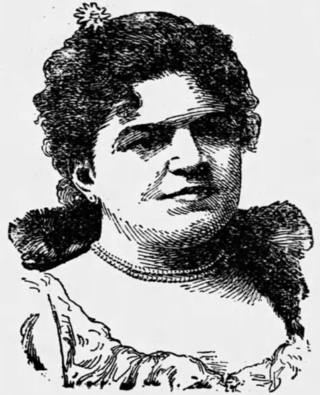
Sofia Scalchi was an Italian operatic contralto who could also sing in the mezzo-soprano range. Her career was international, and she appeared at leading theatres in both Europe and America.

Sir David Lumsden Webster was the chief executive of the Royal Opera House, Covent Garden, from 1945 to 1970. He played a key part in the establishment of the Royal Ballet and Royal Opera companies.
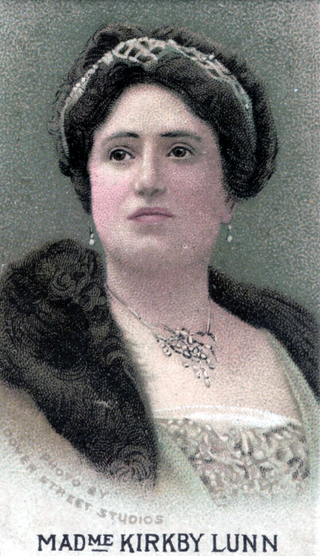
Louise Kirkby Lunn was an English coloratura contralto. Born into a working-class family in Manchester, She appeared in many French and Italian operas, but was best known as a Wagnerian. In addition to many appearances at the Royal Opera House, Covent Garden, London, she was seen frequently at the Metropolitan Opera, New York in the early years of the 20th century. She died in London, aged 56.

Frederick Gye (1810–1878) was an English businessman and opera manager who for many years ran what is now the Royal Opera House, Covent Garden.
Murray Dickie OBE was a Scottish tenor opera singer and director, who established his career in England, Austria and Italy during the 1950s. In addition to his extensive stage work he was a prolific recording artist.

The British National Opera Company presented opera in English in London and on tour in the British provinces between 1922 and 1929. It was founded in December 1921 by singers and instrumentalists from Sir Thomas Beecham's Beecham Opera Company (1915–1920), which was disbanded when financial problems over buying The Bedford Estate forced Beecham to withdraw from the music scene for a short period. The new venture was financed by the issue of 40,000 preference shares at £1 each. Among the musicians who met at the inaugural meeting of the new enterprise at the Queen's Hall were Sir Alexander Mackenzie, Sir Charles Stanford, Harry Plunket Greene, Walter Hyde, Aylmer Buesst and Sir Henry Hadow. The new company bought the entire assets of the Beecham company, comprising the scenery, costumes, scores, instruments and performing rights for 48 operas.

Dora Labbette was an English soprano. Her career spanned the concert hall and the opera house. She conspired with Sir Thomas Beecham to appear at the Royal Opera House masquerading as an Italian singer by the name of Lisa Perli. Away from professional concerns she had an affair with Beecham, with whom she had a son.
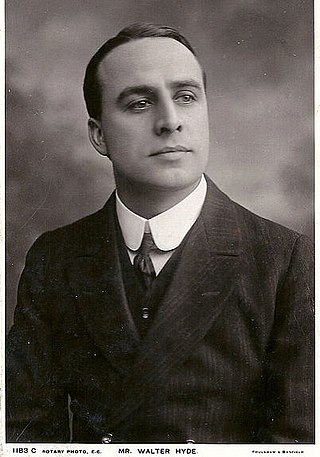
Walter Hyde was a British tenor, actor and teacher of voice whose career spanned genres from musical theatre to grand opera. In 1901 he sang Borrachio in the premiere of Stanford's Much Ado About Nothing and soon appeared in London's West End in light opera and Edwardian musical comedy. He appeared regularly at the Royal Opera House in Covent Garden between 1908 and 1924, becoming known for roles in Wagner operas, among others, both in Britain and America. He was also in demand as a concert artist. In his later years he was Professor of Voice at the Guildhall School of Music where his students included Geraint Evans and Owen Brannigan.
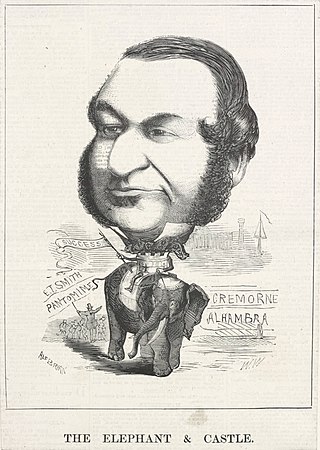
Edward Tyrrel Smith (1804–1877) was a versatile British entrepreneur and showman, best known as an opera and theatrical manager.
References
- Notes
- ↑ A fairly complete list of 18th and 19th century managers is found in Wyndham 1906 , vol. 2, p. 293
- ↑ The dates of the Dukes of Bedford as freeholders are from their succession to the title, not their full dates.
- ↑ The original letters patent from Charles II, dated 15 January 1661/2 (illuminated, on vellum), authorizing Sir William Davenant to form one of two companies of actors, are held in the Rosenbach Museum & Library, Philadelphia. The other company was formed by Thomas Killigrew. The charter is illustrated in Clive E. Driver, A Selection from our Shelves: Books, manuscripts and drawings from the Philip H. & A.S.W. Rosenbach Foundation Museum (Philadelphia, 1973), No. 44; a highly reduced facsimile also appeared in The Sunday Times (5 December 1982). Source: "The Rosenbach Museum & Library, numbers 1 through 239". Catalogue of English Literary Manuscripts (CELM). Retrieved 1 May 2019.
- ↑ Died September 1732 aged 24, at Coruna, Spain
- ↑ Beard married John Rich's daughter Charlotte, retired due to deafness in 1767.
- ↑ Sheppard 1970b, pp. 71-85, para. ¶20.
- ↑ In his will Rich stipulated that the proceeds of theatre leasehold and patents were to be divided up equally between his wife Priscilla and their four legitimate daughters. [6]
- ↑ Sheppard 1970b, pp. 71-85, para. ¶21.
- ↑ Jenkins 2017, p. 256.
- ↑
 This article incorporates text from a publication now in the public domain: "Fisher, John Abraham". Dictionary of National Biography . London: Smith, Elder & Co. 1885–1900.
This article incorporates text from a publication now in the public domain: "Fisher, John Abraham". Dictionary of National Biography . London: Smith, Elder & Co. 1885–1900. - ↑ Sheppard 1970b, pp. 71-85, para. ¶23.
- 1 2 Jenkins 2017, p. 262.
- ↑ These four bought the patents and ground leases for £60,000 from Rich's widow, Priscilla. [8] John Beard's wife, Charlotte, got £12,000. [9] Harris and Powell were in conflict with Colman and Rutherford, and the management seems to have changed several times between various sub-lessees. In 1768 Rutherford sold two-thirds of his quarter share to Henry Dagge of the Inner Temple, and the remaining one third to James Leake of the Strand.
Powell died in 1769, and his daughter's one-sixteenth share passed to the violinist John Fisher, whom she married in around 1770. [10] He devoted musical time and energy to the theatre, but he sold his share [to Harris?] when she died c1781. Colman sold [part of?] his share to James Leake in July 1774. [11] Another source [12] also says that George Colman sold his share in 1774 to Thomas Hull: this may refer to a separate deal at around the same time. - ↑ Lee, Sidney, ed. (1891). . Dictionary of National Biography . Vol. 28. London: Smith, Elder & Co.
- ↑ Sheppard 1970b, pp. 71-85, para. ¶25.
- ↑ By 1785 Harris had acquired 46/60 of both the leasehold of the theatre and the two patents, plus a twenty-one-year lease (jointly with Richard Brinsley Sheridan) of the remaining 14/60 of the patents, mainly financed by a long series of intricate mortgages involving Harris's brother-in-law, Thomas Longman, bookseller of Paternoster Row. [15]
- ↑ Sheppard 1970b, pp. 71-85, para. ¶32.
- ↑ In 1806 Harris sold back to Powell's descendants (George White and Ann Martindale) 1/60 of the patent which he had acquired in 1781, and a one-eighth share in his lease of 1793 from the Duke of Bedford. They in turn agreed to pay their proportion of the very high rent, and to meet some of Harris's expenses from 1802-3. [17]
- ↑ Son of Thomas Harris.
- ↑ Sheppard 1970a, pp. 9-29, para. ¶87.
- ↑ Sheppard 1970a, pp. 9-29, fn 15.
- ↑ At a rent of £7,000 per annum, [20] which he had been unable to pay. [21]
- 1 2 Sheppard 1970b, pp. 71-85, para. ¶40.
- ↑ The father of James William Wallack, owner of Wallack's Theatre in NY.
- ↑ By 1843, when the Theatres Act 1843 finally abolished the monopoly rights of the two patent theatres, Covent Garden had virtually ceased to be a place of dramatic or musical entertainment and had become the venue for a series of meetings of the Anti-Corn Law League, whose long campaign was finally successful in 1846. See Sheppard 1970b, pp. 71-85, para. ¶43
- ↑ Died 1863. Father of Thomas Willert Beale.
- ↑ Donaldson 2011, p. 12.
- ↑ Thomas Harris died in October 1820, and soon afterwards John Kemble transferred his one-sixth share to his younger brother, Charles Kemble. Henry Harris, with 7/12, was now the principal proprietor, and therefore succeeded to the management with Charles Kemble (1/6), John Willett (1/16) and John Forbes (1/16) (George White's sons-in-law and heirs): in March 1822 they entered into an agreement with Henry Harris by means of which they were to have control of the theatre for ten years. There was opposition from Francis Const, a lawyer, who inherited a life interest in one eighth (2/16) from Mrs. Martindale, recently deceased. Persistent wrangling between the lessees meant that the theatre did not prosper in the 1820s. [23]
- ↑ Sheppard 1970b, pp. 71-85, para. ¶47.
- ↑ This is the conjuror who organised an unruly bal masqé, at the end of which a fire broke out which destroyed the theatre in the early hours of 5 March 1856. [29]
- ↑ Mapleson went to the USA and put on opera at the New York Academy of Music. His nephew Lionel Mapleson created the Mapleson Cylinders at the 'old' Metropolitan Opera House during the last years of Maurice Grau's directorship there. Grau was also manager of Covent Garden 1897-1900 for the Syndicate.
- 1 2 "Covent Garden". The Sydney Morning Herald. 13 April 1929. p. 22. Retrieved 19 April 2017.
- ↑ Sheppard 1970b, pp. 71-85, paras. ¶51-2.
- ↑ After the second theatre burned down, the 7th Duke granted Gye a new 90-year lease in 1856. To fund the rebuilding, a syndicate of 15 wealthy individuals invested £80,000. On 1 October 1857 Gye assigned the agreement for a 50-year sub-lease to three trustees, to hold on behalf of this London Opera Syndicate, [32] which included E. M. Barry (£1,500), the principal contractors, C. and T. Lucas (£21,159 jointly), the sub-contractor for the ironwork, Mr. Henry Grissell (amount unknown) and the 7th Duke of Bedford (£19,600). [33] Gye died in 1878, leaving the business to his sons.
- ↑ Parker 1900, p. 8.
- ↑ Parker 1900, pp. 10–15.
- ↑ Hurst 1959, p. 97.
- ↑ "Signor Lago's failure". New York Times. 6 November 1892. Retrieved 19 April 2017.
- ↑ Signor Lago had for several years been regisseur and general factotum to Frederick Gye and his successors. [37] In 1892 Lago, who had managed the Imperial Opera Company of St. Petersburg at the Mariinsky Theatre, engaged Henry Wood to conduct an autumn season of opera at the Olympic Theatre (later demolished to make the Aldwych). Lago's enterprise failed: for example, he put on Lohengrin with Emma Albani: and Augustus Harris at the ROH—competing directly with Lago—gave Lohengrin with Adelina Patti. [38]
- ↑ Parker 1900, p. 23.
- ↑ Inwood, Stephen (2011). City Of Cities: The Birth Of Modern London. Pan Macmillan. ISBN 9780330540674.
- ↑ Out of the main spring season of Grand Opera, masked balls had again become popular: in the 1890s those with a guinea for ticket could dance from midnight until 5 am to the band music of Lt. Dan Godfrey, father of Sir Dan Godfrey. [41]
- ↑ Sheppard 1970b, pp. 71-85, para. ¶60.
- ↑ Montagu acquired the lease from Gye, having bought up the mortgages of the surrounding properties. Montagu d. 1895, leaving the real estate to Denison Faber, who at the time was registrar of the Judicial Committee of the Privy Council, and later 1st Baron Wittenham. Faber sub-leased it to the Grand Opera Syndicate Ltd., formed out of the Grand Opera Syndicate after by Augustus Harris's death. [43]
- ↑ Meredith, Mark (25 August 2019). "Henry Vincent Higgins (1855-1928)". House Histree. Retrieved 16 March 2024.
- ↑ Chamier 1938, p. 95.
- ↑ In 1896 the Syndicate consisted of: the Marquess of Ripon, Lord Esher, Lord Wittenham (ie Faber), Mr. 'Harry' V. Higgins, chairman & managing director, [45] and later Baron d'Erlanger. [46]
- ↑ Sheppard 1970b, pp. 71-85, para. ¶63.
- ↑ The syndicate's previous 50-year sub-lease ran out in 1899: they purchased the leasehold from George D. Faber and negotiated a 30-year lease from the freeholder, the 11th Duke. This was due to expire in February 1929. [48]
- 1 2 3 Sheppard 1970b, pp. 71-85, paras. ¶62-3.
- ↑ The London Opera Syndicate, formed by the industrialist and art collector Samuel Courtauld, took a three-year sub-lease from the Grand Opera Syndicate which was described as 'though still alive, had ceased to function, [and] the "Phoenix" seemed really dead'. [50]
- ↑ Reay, W. T. (1920). The Specials, how they served London; the story of the Metropolitan special constabulary. London: Heinemann. p. 22. On August 17, 1914, 2,000 special constables were sworn in under Capt. Stuart, Commander of E Division.
- ↑ Chamier 1938, p. 185.
- ↑ Lucas 2008, pp. 153–6.
- ↑ Lucas 2008, pp. 157.
- ↑ Beecham had been involved with Covent Garden since 1912. The Beecham 1919 and 1920 seasons resulted in a financial fiasco. The liquidators were called in to the Beecham Opera Company, [54] and Beecham was likely to be personally petitioned for bankruptcy. [55] He was left with a white elephant which no-one wanted, and retired from public life in 1921 for several years to sort out his financial affairs.
- ↑ Lucas 2008, pp. 111–12.
- 1 2 Lucas 2008, p. 163.
- ↑ By 1929 the 90-year lease of 1857 from the 7th Duke of Bedford had about two more years to run. In the meantime, the freeholders, Covent Garden Properties Co. bought in the remainder of the Royal Opera Syndicate lease, and thereby became freeholders in possession. [32]
- ↑ Sheppard 1970b, pp. 71-85, para. ¶62-3.
- ↑ Lucas 2008, p. 111-176.
- ↑ Sheppard 1970a, pp. 9-29, para. ¶108.
- ↑ Sheppard 1970c, pp. 48–52.
- ↑ Also associated with Covent Garden Estate Company Limited [62] [63]
- 1 2 Lucas 2008, p. 216.
- ↑ Philip Hill was the managing director of Beecham Estates and Pills Ltd., which had completely bought out Sir Thomas and Harry Beecham's interests in 1924, and which became Covent Garden Properties Company Ltd. in 1928. [58]
- ↑ The Chairman of the Royal Opera House Company was Viscount Allendale, with Philip Hill, [66] Lady Cunard, and other peers of the realm. [65]
- ↑ Sadlers Wells Ballet first prod. Sleeping Beauty (1946); Covent Garden Opera Co., first prod. The Fairy Queen (1946?)
- ↑ Not to be confused with the Covent Garden Area Trust, set up in 1988 to conserve the historic architecture, environment and unique qualities of the 97-acre Covent Garden area.
- ↑ "Gen Trust SA as Trustees of the Covent Garden Trust". Panama Offshore Leaks Database. 2016. Retrieved 18 April 2017.
- ↑ "The Trustee for the Covent Garden Trust". Australia businesses. (ID no. 29059746252). 2015. Retrieved 18 April 2017.
- ↑ "Royal Opera House Covent Garden Limited: A public benefit assessment report by the Charities Commission" (PDF). The Charities Commission. 2010. Retrieved 19 April 2017.
- ↑ "Royal Opera House (London)". Theatres Trust. Retrieved 18 April 2017.
- ↑ "£600m Covent Garden plan launched". Property Week. Retrieved 18 April 2017. (Subscription required.) NB The lease of 1949 was theoretically up for renewal in c1991, but this needs confirmation.
- ↑ "Covent Garden Market Authority: Report & Accounts for the accounting period 1 April 2013 - 31 March 2014" (PDF). p. 31. Retrieved 18 April 2017.
- ↑ "Royal Opera House". AIM25. Retrieved 19 April 2017.
Sources
- Chamier, J. Daniel (1938). Percy Pitt of Covent Garden and the BBC. London: Edwin Arnold & Co. (Edited from Pitt's unpublished MS autobiography)
- Donaldson, Frances (2011). The Royal Opera House in the Twentieth Century. A&C Black. ISBN 9781448205523.
- Jenkins, Neil (2017). "John Beard, chapter 13: Retirement". Neil Jenkins Information Website. p. 232. Retrieved 19 April 2017.
- Hurst, P. G. (1959). The Operatic Age of Jean de Reszke: Forty Years of Opera, 1874–1914. Robert M. McBride Co.
- Lucas, John (2008). Thomas Beecham: An Obsession with Music. Boydell & Brewer. ISBN 9781843834021.
- Parker, E. D. (n.d.) [1900]. Opera under Augustus Harris. London: Saxon & Co.
- Sheppard, F. H. W., ed. (1970). "The Theatre Royal: Management". The Theatre Royal, Drury Lane, and the Royal Opera House, Covent Garden. Survey of London: Volume 35. (hosted at British History Online). London: London County Council. Retrieved 15 April 2017.
- Sheppard, F. H. W., ed. (1970). "Covent Garden Theatre and the Royal Opera House: Management". The Theatre Royal, Drury Lane, and the Royal Opera House, Covent Garden. Survey of London: Volume 35. British History Online. London: London County Council. Retrieved 15 April 2017. (Paragraphs are numbered in faint (¶) on the lh side.)
- Sheppard, F. H. W., ed. (1970). "The Bedford Estate: The Sale of the Estate". Covent Garden. Survey of London: Volume 36. (hosted at British History Online). London: London County Council. Retrieved 15 April 2017.
- Wyndham, Henry Saxe (1906). The Annals of Covent Garden Theatre, from 1732 to 1897. (2 vols.). London: Chatto & Windus. Volume 1 • Volume 2